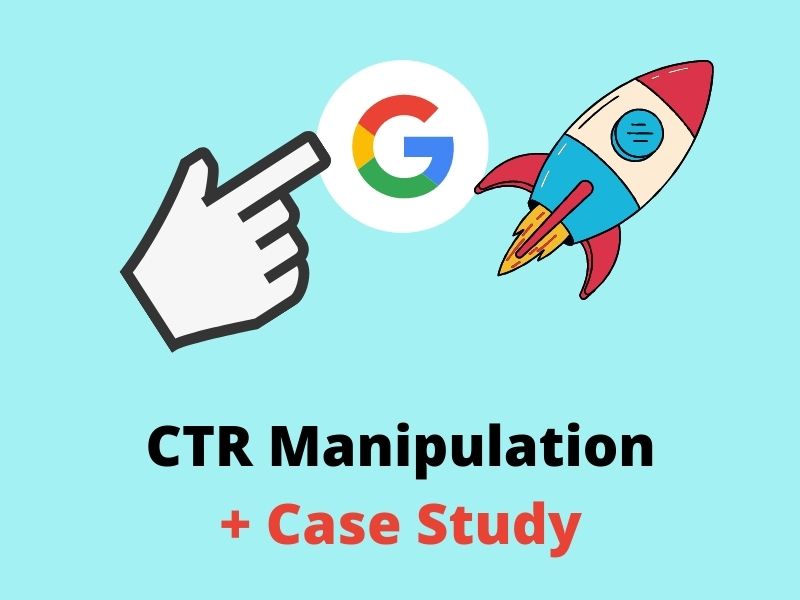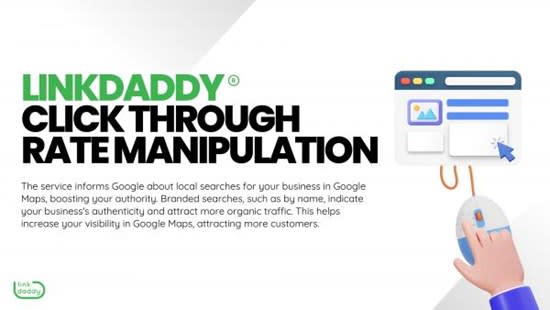CTR Manipulation: A Game Changer for Digital Campaigns
The rise of CTR manipulation has indisputably transformed electronic marketing strategies, supplying marketers with tools to enhance engagement and drive website traffic successfully. Strategies such as A/B screening and individualized web content have proven to yield significant enhancements in click-through rates. Nevertheless, as brand names significantly take advantage of these methods, the honest ramifications of such practices warrant scrutiny. Stabilizing the pursuit of maximized metrics with the demand for authentic target market connections postures a critical difficulty for marketers today. What effects might this stabilizing act hold for the future of digital campaigns?
Recognizing CTR Control
Although click-through price (CTR) control might appear like a straightforward method in electronic advertising, it includes a series of approaches intended at artificially inflating engagement metrics. This manipulation can take numerous kinds, consisting of the use of click ranches, bots, or misleading ad positionings that mislead consumers right into clicking. These methods can jeopardize the honesty of efficiency data, making it testing for online marketers to gauge the genuine efficiency of their campaigns.
Moreover, CTR control elevates honest worries, as it undermines the transparency of digital marketing. The reliance on filled with air metrics can result in misguided marketing choices, skewing resource appropriation and campaign methods. Subsequently, businesses might spend heavily in networks and tactics that appear successful however do not produce genuine engagement or conversions.

Advantages of Click-Through Rate Optimization
Enhancing click-through price (CTR) is necessary for improving the efficiency of electronic marketing projects. A greater CTR indicates that a larger percentage of customers are engaging with the content, which can lead to boosted internet site traffic and better conversion prices. By boosting CTR, brands can properly assign their marketing sources to campaigns that generate the highest possible returns.
One of the primary benefits of CTR optimization is the possibility for improved advertisement placement and reduced prices - CTR Manipulation. Platforms like Google Advertisements compensate greater CTRs with much better advertisement positioning and minimized cost-per-click (CPC), enabling online marketers to stretch their budget plans additionally. In addition, a well-optimized CTR can enhance brand presence, as higher interaction prices usually associate with enhanced organic reach

Techniques for Reliable CTR Control
To successfully control click-through rates (CTR), marketing professionals can employ a selection of critical techniques that boost customer involvement and drive traffic. One basic method is optimizing ad copy to develop engaging and action-oriented language. CTR Manipulation. Utilizing strong call-to-action (CTA) phrases encourages users to take prompt action, boosting the likelihood of clicks
Another effective strategy is A/B screening, which enables marketing professionals to contrast different advertisement variations. By methodically examining efficiency metrics, they can recognize which components resonate ideal with the target audience, thus improving their strategies for maximum effect. Furthermore, leveraging aesthetically attractive graphics and succinct messaging can catch interest promptly, making it extra likely that customers will involve.

Finally, maximizing touchdown web pages to make certain a smooth individual experience can minimize bounce prices and urge additional interaction, eventually promoting greater CTR. By integrating these techniques, marketers can efficiently manipulate CTR to accomplish their campaign objectives.
Determining Success in Digital Campaigns
Measuring success in electronic projects needs a clear understanding of essential performance indications (KPIs) that align with campaign purposes. KPIs work as measurable metrics that help analyze the performance of different methods utilized throughout the project. Usual KPIs consist of click-through rates (CTR), conversion prices, cost look at this now per purchase (CPA), and return on investment (ROI)
To successfully determine success, it is important their website to establish certain, measurable objectives first of the campaign. For example, if the key goal is to boost brand understanding, metrics such as impressions and interaction prices might be focused on. On the other hand, projects focused on direct sales would gain from a much more detailed evaluation of conversion prices and profits generated.
Regular analysis of these KPIs makes it possible for online marketers to make data-driven decisions, optimizing their approaches in real-time. Making use of analytical tools can aid in monitoring performance and recognizing patterns, enabling speedy modifications to boost project results. Ultimately, a comprehensive method to measuring success not only highlights locations for improvement however also strengthens the overall efficiency of digital advertising efforts, driving sustained growth and interaction in the long-term.
Future Fads in Digital Advertising
Preparing for the future of electronic marketing discloses a landscape shaped by fast technological developments and transforming consumer actions. As artificial knowledge and device learning proceed to evolve, online marketers will increasingly leverage these technologies to personalize projects at an extraordinary range. Anticipating analytics will certainly allow brand names to anticipate client needs, maximizing advertisement placements and content shipment in actual time.
Moreover, the increase of voice search and wise tools is changing how consumers engage with digital web content. Marketers will need to adapt their approaches to guarantee visibility throughout multiple platforms, including voice-activated assistants. This change necessitates a concentrate on conversational advertising and marketing, stressing involvement via discussion as opposed to typical marketing methods.
Furthermore, personal privacy worries are prompting modifications in information collection techniques. Transparency and honest information use will certainly come to be critical, driving brand see this site names to promote trust and loyalty amongst consumers. The ongoing evolution of social media sites platforms will also influence advertising and marketing methods, with an enhanced focus on credibility and user-generated material.
Final Thought
In recap, CTR manipulation represents a substantial improvement in electronic advertising and marketing techniques, offering immediate benefits via boosted involvement metrics. The continuous advancement of electronic advertising will depend on this fragile interaction, shaping the future landscape of brand-consumer communications.